Honour Prize for Naval Fliers
CATEGORY: Version
SKU: 02.GEM.0109.101.01.000
Estimated market value:
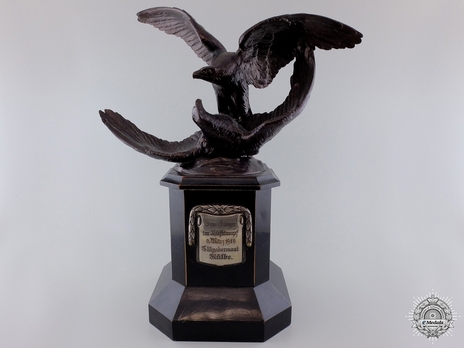
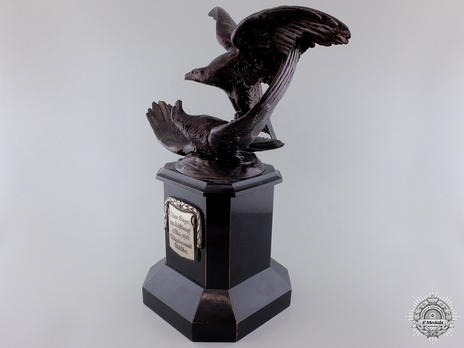
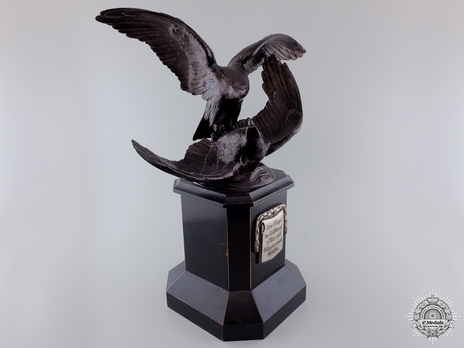
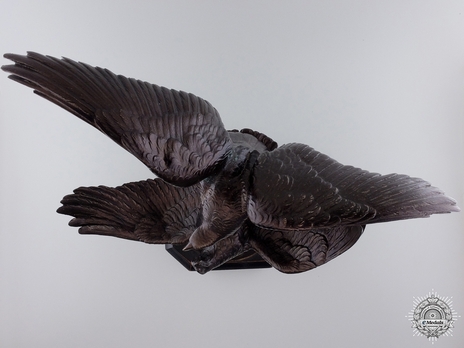
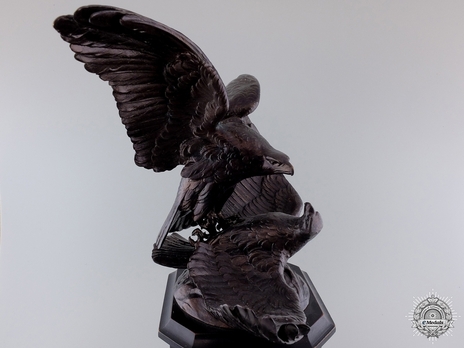
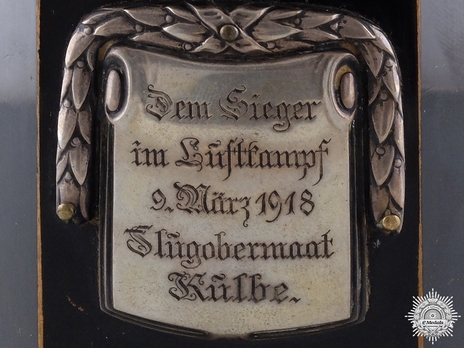
Estimated market value:
A German Honour Prize for Naval Flyers to Flight Petty Officer Külbe - Scarce and finely produced in bronze, two-piece construction, illustrating two spread-winged eagles, one on the bottom facing upwards at the mercy of the one on top, symbolic of an air battle victory by the upper eagle, the bottom eagle lying on a circular base, the eagles mounted to an octagonal, blackened wooden plinth (heavy base), a silver scroll plaque affixed to the plinth on its front panel, inscribed "Dem Sieger im Luftkampf 9. März 1918 Flugobermaat Külbe" (The Victor of an Air War (Dogfight), March 9, 1918, Flight Petty Officer Külbe", the scroll framed by a u-shaped branch of laurel leaves, the bronze eagles and circular base held in place by a long screwpost visible on the underside of the plinth, the award weighing 1,479 grams, with a height of 247 mm, a 200 mm wingspan of the upper eagle, a 173 mm wingspan of the lower eagle, the plinth measuring 113 mm x 117 mm x 120 mm in height. Green oxidation visible on the reverse of the upper eagle's back, light contact overall, extremely fine.
An air force branch under control of the German Navy was formed by decree of Emperor Wilhelm II on June 1, 1913. Its tasks were mainly reconnaissance-related and confined to the North Sea and Baltic areas. Some naval air force support was granted to the Ottoman allies, namely in the Black Sea area, including the Dardanelles. This does not mean, however, that they weren’t involved in combat with enemy planes and ships. About half of all naval airplanes were destroyed or damaged beyond repair during the war.
Naval air force personnel numbers have been given at just over 16,000, with just over 2,000 of them trained pilots and observers.
The Honour Prize for Naval Fliers was introduced by the German Navy on January 3, 1917. Until then, Naval fliers had been awarded the regular Honour Goblet for the Victor in Aerial Combat. The Honour Prize was awarded to an aircraft crew who had successfully destroyed an enemy airplane or ship.
The Honour Prize features two fighting eagles made of bronze attached to a wooden plinth. On the obverse of the plinth a silver plaque with a dedication was placed, including the name and rank of the distinguished pilot or observer as well as the date of the deed. The reverse may or may not feature a second plaque with further victories. The Honour Prize was only awarded once per recipient.
The Honour Prize was accompanied by an award document.
The entire sculpture measures approximately 25cm in height and weighs about 1.5kg. At its widest, at the bottom, the plinth has a diameter of about 11.5cm.
It is unknown how many Honour Prizes were awarded, but a combined 182 for 1917 and 1918 have been confirmed. The actual number of awards is probably not much higher.

Comments
Sign in to comment and reply.


Scroll Top